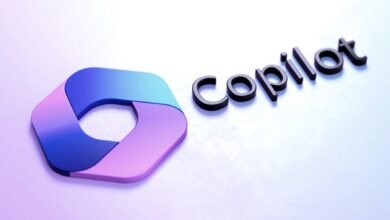Is Instagram Replacing the Blog? The New Era of Digital Diaries
Instagram has emerged as a formidable contender in the realm of online storytelling. This brings us to a pressing question: Is Instagram replacing the blog as the new form of digital diary?

In the ever-evolving world of digital content, we are witnessing a major shift in how people share their stories, experiences, and insights online. For more than two decades, blogs served as the go-to platform for long-form expression, lifestyle updates, personal opinions, and even professional advice. However, in recent years, Instagram has emerged as a formidable contender in the realm of online storytelling. This brings us to a pressing question: Is Instagram replacing the blog as the new form of digital diary?
EXPLORE THE CONTENTS
The Evolution of Blogging
The early 2000s marked the golden era of traditional blogging. Platforms like Blogger, WordPress, and LiveJournal empowered users to document their lives, discuss their passions, and connect with like-minded readers. These blogs served as digital diaries where users could post long-form content, complete with photos, hyperlinks, and detailed narratives.
During this time, blogs were not only personal journals but also educational hubs. Food blogs, travel diaries, parenting advice columns, and fashion lookbooks flourished. Bloggers often cultivated loyal readerships, with readers subscribing via RSS feeds and returning for regular updates.
However, the growth of social media began to shift attention away from long-form content. Shorter attention spans and the allure of instant gratification changed how users consumed information.
The Rise of Instagram: Visual Storytelling Takes the Stage
Founded in 2010, Instagram introduced a radically different approach to content sharing. With its emphasis on visual aesthetics, bite-sized captions, and real-time interaction, Instagram appealed to a generation hungry for visually immersive experiences.
Over time, Instagram stories, reels, and carousels became tools for sharing daily experiences, creative work, and life moments—much like blogs did a decade earlier. Influencers, creators, and everyday users started using the platform not just for pictures but for personal expression, brand-building, and storytelling.
The introduction of features like Instagram Highlights further cemented the app’s place as a form of modern digital diary. Users could now archive and curate their life updates in thematic categories, making their profiles look like a living, breathing blog.
Microblogging: The Blog-Instagram Hybrid
One of the most significant trends to emerge from Instagram’s growth is microblogging. In essence, microblogging is the practice of sharing detailed thoughts or stories in the caption section of Instagram posts, usually accompanied by compelling visuals.
Unlike traditional blog posts, which can run 1000+ words, Instagram captions usually contain a few hundred words—enough to provide context, express emotion, or tell a short story. For many users, this format strikes a balance between depth and convenience, allowing them to engage their audience without requiring a separate platform.
As a result, Instagram has become a hub for personal reflections, educational content, tutorials, and life updates, especially in niches like wellness, travel, food, and fashion. The combination of visuals and text offers a multi-sensory experience, often making it more engaging than a standard blog post.
Accessibility and User Experience
One of the reasons Instagram is gaining ground over blogs is its ease of use and accessibility. Creating and maintaining a blog requires setting up a domain, selecting a CMS, designing the layout, and optimizing for SEO—a process that can be daunting for the average user.
In contrast, Instagram offers an all-in-one platform with user-friendly design tools, built-in analytics, and seamless mobile functionality. With just a smartphone, users can create, edit, publish, and promote content to a potentially global audience.
Additionally, audience interaction on Instagram is immediate. Features like likes, comments, shares, DMs, and poll stickers offer instant feedback, creating a more interactive and responsive environment than most blogs, which often rely on slower, comment-based feedback.
Instagram’s Algorithm vs Blog SEO
One crucial difference between blogging and Instagram content lies in content discoverability. Blogs primarily depend on search engine optimization (SEO) to reach new readers. This requires an understanding of keyword research, metadata, backlinks, and content structuring—skills that not all creators possess.
In contrast, Instagram content is largely driven by the platform’s algorithm, which surfaces content based on user behavior, engagement patterns, and trending hashtags. While this can help creators grow quickly, it also means that control over visibility is limited. Posts can go viral or remain unseen based on ever-changing algorithmic whims.
This makes traditional blogging more appealing for users seeking long-term discoverability and content longevity. Blog posts can remain relevant and searchable for years, whereas most Instagram posts have a limited lifespan in the feed.
Monetization and Professional Opportunities
When it comes to monetization, both blogs and Instagram offer unique opportunities. Bloggers often earn through ads, affiliate marketing, sponsored posts, and digital products. These revenue streams can be stable and scalable, especially when combined with strong SEO practices and email marketing.
Instagram, on the other hand, has popularized the role of the influencer, where creators partner with brands for sponsored content, use affiliate links in Stories, or sell their own merchandise. The visual nature of the platform makes it ideal for product promotion and branding, especially in lifestyle niches.
However, monetizing an Instagram presence can be more volatile. Changes to the algorithm, declining reach, or account restrictions can drastically affect income. In contrast, a blog offers greater control and ownership over content and monetization strategies.
Authenticity and Depth of Expression
Another area where blogs and Instagram differ is in the depth of content and authenticity. Blogs allow for detailed explanations, in-depth tutorials, personal anecdotes, and thought leadership. There is space for nuance, structure, and storytelling that builds over multiple paragraphs or articles.
Instagram, while rich in visual expression, often favors short-form, emotionally charged content. While this resonates with audiences, it can sometimes encourage performative authenticity—a curated form of reality. Some users feel pressured to present their lives in a visually pleasing way, which can detract from genuine self-expression.
For users who value reflective writing and storytelling, blogs still provide the best platform. However, for those looking to capture fleeting moments, aesthetics, or mood, Instagram offers unmatched immediacy and visual power.
The Hybrid Creator: Best of Both Worlds
Recognizing the strengths of each platform, many content creators today are adopting a hybrid strategy. They use blogs for long-form content that requires detail and structure, while leveraging Instagram for real-time updates, audience engagement, and promotion.
This multi-platform approach maximizes reach and ensures that content remains visible across different audience types. For instance, a travel blogger might write a detailed itinerary post on their blog and share snippets, photos, and quick tips on Instagram Stories or Reels. Each platform enhances the other, offering a complementary ecosystem rather than a competing one.
Community and Connection
At their core, both blogs and Instagram serve as tools for community building and connection. Blogs tend to attract readers who are deeply interested in the topic, often leading to meaningful, long-term relationships. Comment sections on blogs can evolve into discussions, support systems, or even business opportunities.
Instagram, meanwhile, fosters more immediate and dynamic interaction. Creators can go live, respond in DMs, create polls, and react to comments, making the community feel closer and more personal. However, this form of interaction is often fleeting and heavily reliant on the platform’s engagement metrics.
The choice between platforms often comes down to how creators want to engage with their audience and what kind of community they want to build.
The Future of Digital Diaries
As we move deeper into a content-saturated world, the future of digital expression will likely blend elements of both blogs and Instagram. Emerging technologies like AI, AR filters, interactive media, and cross-platform content distribution are reshaping the way people create and consume digital diaries.
The lines between blogs and social media will continue to blur. Instagram is adding more text-based tools, while blogging platforms are integrating social sharing, short-form posts, and multimedia content. Creators are increasingly platform-agnostic, focusing more on content quality and audience trust than on any one channel.
Final Thoughts: Is Instagram Really Replacing the Blog?
So, is Instagram replacing the blog? The answer is both yes and no.
Yes, in the sense that Instagram has become the dominant platform for personal storytelling and visual diaries. Its simplicity, engagement tools, and cultural relevance make it an attractive space for creators and audiences alike.
But no, because blogs still hold unparalleled value in certain areas—depth, ownership, discoverability, and long-term relevance. For many creators, a blog remains the backbone of their digital presence, offering more control and substance than social media can.
Rather than viewing Instagram and blogs as rivals, it’s more accurate to see them as evolving tools in the ever-changing landscape of digital self-expression. Whether you’re writing a heartfelt blog post or posting a photo with a poetic caption, the core purpose remains the same: to share your story with the world.







